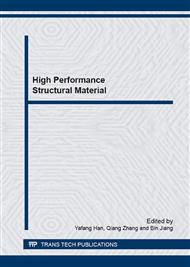p.755
p.761
p.769
p.775
p.781
p.788
p.795
p.804
p.810
Hot Deformation and Processing Map of C919 Aluminum Alloy
Abstract:
The hot deformation behaviors of Aluminum alloy C919 were studied in the present investigation. The hot compression tests for C919 were carried out in the temperature range of 350°C~470°C and strain rates range of 0.001s-1~1s-1 using GLEEBLE-1500 thermal simulate testing machine. Optical microscopy (OM) was used for the microstructure characterization. The experimental results showed that the flow stress of C919 aluminum alloy decreased with increasing temperature and decreasing strain rates and the flow stress curves tended to increase at a strain rate of 1s-1 with increasing strain, while the flow stresses kept with increasing strain at lower strain rate. The alloys were more prone to dynamic recrystallization with decreasing strain rates during hot deformation. The hot compression behavior of C919 aluminum alloy can be described as hyperbolic sine function corrected Arrhenius relation. The processing maps for the alloy were built at a strain of 0.6. The instability deformation domain occurred at temperatures range from 350°C and 380°C and at a strain rate of 0.1-1s-1. Based on the processing maps and microstructure observations, the optimum hot-working parameters were determined to be at a temperature of 470°C in the strain rate range from 0.1-0.01s−1 for the C919 aluminum alloy.
Info:
Periodical:
Pages:
810-817
Citation:
Online since:
April 2015
Authors:
Keywords:
Price:
Сopyright:
© 2015 Trans Tech Publications Ltd. All Rights Reserved
Share:
Citation:


